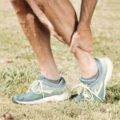Fascia seems to be yet another one of the big buzzwords in the movement and exercise industry. But what is fascia?
One of the leading experts in this area, Tom Myers, defines fascia as the “biological fabric that holds us together, the connective tissue network.” Often that will be simplified to say the connective tissue that surrounds the muscles and nerves, but Tom argues it is much bigger than that. He says
“Here, though, and increasingly in scientific and research circles and professionals worldwide, ‘fascia’ has a wider definition: all the collagenous-based soft-tissues in the body, including the cells that create and maintain that network of extra-cellular matrix (ECM). Answering the question “what is fascia?” with this new definition includes all the tissues traditionally designated as ‘fascia’ in classical anatomy, plus all the other very similar tissues arrayed in different ways around the body; tendons, ligaments, bursae, and all the tissue in and around the muscles – endomysium, perimysium, epimysium. They are all made out of largely the same stuff and created in such the same way.”
That’s a lot of stuff! The fascia network is connected throughout the whole body as one continuous network, so it’s not possible to focus on just one area of the body without affecting other parts of the body.
So the fascia is big, but that’s not the only reason it’s a big deal. Fascia is plastic. When forces pull or press on it – whether that’s from massage, stretching, exercise or staying in a fixed position – the fascia can change shape and stay in that new shape.
Say for example you sit at a desk or ride a bicycle for hours, slightly hunched forward. Both your muscles and the fascial network will adapt to this shape and the fascial network in particular is more likely to hold the pattern – specifically the shortening in your chest and lengthening in your back and neck.
To reverse that pattern, stretching the front of the chest (try this restorative backbend) and contracting the back of the body (like this version of cobra pose) can help. But you can also disrupt the pattern, by regularly moving. At least once every hour, take 2 minutes to move your upper body and focus on moving your chest, back and shoulders through a range of motions.
If you’re stuck for ideas, check out the 3 minute videos on my YouTube Channel that feature yoga that you can do at work without changing your clothes or leaving your desk, like this one:




